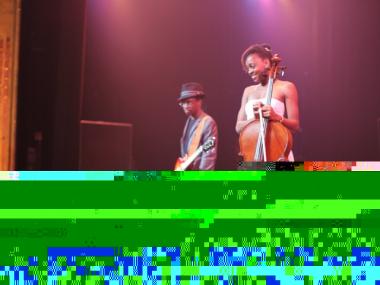
By Leslie Albrecht
DNAinfo Reporter/Producer
UPPER WEST SIDE — Frank Jefferson grew up in South Carolina and remembers a time when black people like him couldn't vote. Now a brain tumor has robbed him of most of his sight, but he still makes it a point to participate in every election.
That's why Jefferson, 63, attended a demonstration Friday at the Jewish Guild for the Blind on West 65th Street, where election workers showed blind and visually impaired people how to use New York's new voting machines.
"I've been voting since 1968," Jefferson said, who cast his first ballot for Harlem congressman Adam Clayton Powell, Jr. "I couldn't wait to get old enough to vote."
Jefferson can't see small things and he has no peripheral vision. On Tuesday, he and other visually impaired voters will use special machines with screens and headphones to cast their ballots.
The machines read ballots aloud to blind voters, then tell them when to press a button to make their selection. Voters use a keypad or oversized mouse-like device to cast their votes. The machines can also accommodate voters who can't use their hands with a mouth-controlled device.
Rosetta Davis, 57, was partially blinded as a child, and lost the rest of her sight this year. She gets around with the help of a guide dog named Abbott and a white cane.
Davis has voted since she was 18 and she's already voted in Tuesday's election with an absentee ballot that her son helped her fill out. But she attended Friday's demonstration so she can be ready to vote in next year's election, she said.
"In some countries, you can't vote if you're handicapped and you can't vote if you're a woman and if you're a minority," Davis, who is black, said. "A lot of blacks died trying to get the right to vote. If you've got the right to vote, you should cherish it."




















